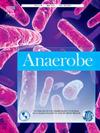碳青霉烯类药物与他唑巴坦/哌拉西林治疗脆弱拟杆菌感染的回顾性研究
IF 2.6
3区 生物学
Q3 MICROBIOLOGY
引用次数: 0
摘要
背景:脆弱拟杆菌是最常见的致病性厌氧菌之一。易裂芽孢杆菌引起的感染通常用碳青霉烯类或他唑巴坦/哌拉西林治疗。然而,由于脆弱芽孢杆菌的多种抗生素耐药机制,尚无证据表明针对脆弱芽孢杆菌感染的最佳抗生素选择是一种经验疗法。因此,我们比较了碳青霉烯类和他唑巴坦/哌拉西林作为抗生素治疗脆弱杆菌感染患者的有效性。方法:研究2019年至2024年期间,由于碳青霉烯类或他唑巴坦/哌拉西林感染症状加重,患者改用碳青霉烯类或他唑巴坦/哌拉西林等广谱抗生素的死亡率、临床和抗菌效果,以及患者比例。结果:共纳入60例患者;24例患者接受碳青霉烯类药物治疗,36例接受他唑巴坦-哌拉西林治疗。两组患者均未死亡。与碳青霉烯治疗相比,他唑巴坦/哌西林治疗显著改善炎症标志物,包括体温和c反应蛋白(分别为45.8%比72.2%,p = 0.039和37.5%比63.4%,p = 0.045);碳青霉烯与他唑巴坦/哌拉西林)。他唑巴坦/哌拉西林组患者从碳青霉烯类药物转向他唑巴坦/哌拉西林或反之的比例显著低于碳青霉烯类药物组(41.7% vs. 11.1%, p < 0.001)。结论:他唑巴坦/哌拉西林可作为脆弱贝氏杆菌感染的一线经验治疗方案。本文章由计算机程序翻译,如有差异,请以英文原文为准。
A retrospective study comparing the effectiveness of carbapenems and tazobactam/piperacillin as an empirical treatment for patients infected with Bacteroides fragilis
Background
Bacteroides fragilis is one of the most frequently isolated pathogenic anaerobic bacteria. Infections caused by B. fragilis are commonly treated with carbapenems or tazobactam/piperacillin. However, there is no evidence for the optimal antibiotic choice against infections caused by B. fragilis as an empirical therapy owing to its varied antibiotic resistance mechanisms. Hence, we compared the effectiveness of carbapenems and tazobactam/piperacillin as an antibiotic therapy in patients infected with B. fragilis.
Methods
We investigated mortality, clinical and antimicrobial efficacy, and the percentage of patients who switched to broad-spectrum antibiotics, such as carbapenems or tazobactam/piperacillin, due to the aggravated symptoms of infection in patients receiving carbapenems or tazobactam/piperacillin from 2019 to 2024.
Results
A total of 60 patients were included in the study; 24 patients received carbapenems and 36 received tazobactam-piperacillin as an empirical treatment against B. fragilis infections. None of the patients in either group died. Compared to carbapenem treatment, tazobactam/piperacillin treatment significantly improved inflammatory markers, including body temperature and C-reactive protein (45.8 % vs. 72.2 %, p = 0.039 and 37.5 % vs. 63.4 %, p = 0.045, respectively; carbapenem vs. tazobactam/piperacillin). The percentage of patients switching from carbapenems to tazobactam/piperacillin or vice versa was significantly lower in the tazobactam/piperacillin group than in the carbapenem group (41.7 % vs. 11.1 %, p < 0.001).
Conclusions
Our findings suggest that tazobactam/piperacillin can be used as the first-line empirical treatment for patients infected with B. fragilis.
求助全文
通过发布文献求助,成功后即可免费获取论文全文。
去求助
来源期刊

Anaerobe
生物-微生物学
CiteScore
5.20
自引率
8.70%
发文量
137
审稿时长
76 days
期刊介绍:
Anaerobe is essential reading for those who wish to remain at the forefront of discoveries relating to life processes of strictly anaerobes. The journal is multi-disciplinary, and provides a unique forum for those investigating anaerobic organisms that cause infections in humans and animals, as well as anaerobes that play roles in microbiomes or environmental processes.
Anaerobe publishes reviews, mini reviews, original research articles, notes and case reports. Relevant topics fall into the broad categories of anaerobes in human and animal diseases, anaerobes in the microbiome, anaerobes in the environment, diagnosis of anaerobes in clinical microbiology laboratories, molecular biology, genetics, pathogenesis, toxins and antibiotic susceptibility of anaerobic bacteria.
 求助内容:
求助内容: 应助结果提醒方式:
应助结果提醒方式:


